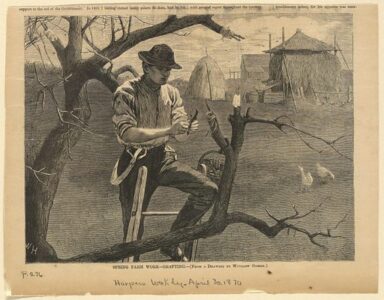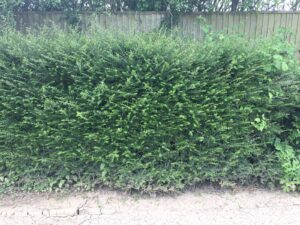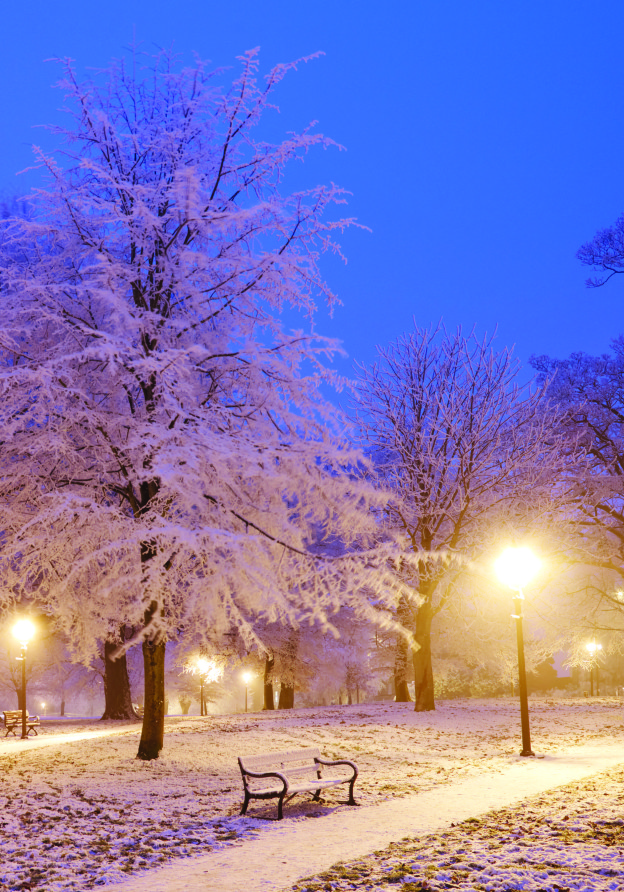Pruning woody plants is a big part of a gardener’s life, and winter is when a lot of it gets done – especially after windy weather leaves some rough edges to tidy up. When we examine a typical branch, we can see that there are basically three ways one could cut it: So, a hedge… Continue reading How to Prune Trees VS Clipping Hedges
Tag: hedging
Many Layers of a Shrub Honeysuckle Hedge
This Lonicera nitida hedge in a local Somerset car park is a prime example of how good this hedge plant looks despite neglect! A good hedge is thick and bushy down to the base, which is easy to maintain in most cases by trimming at least once or twice a year.Years of neglect tend to… Continue reading Many Layers of a Shrub Honeysuckle Hedge
The Best Plants for a Wildlife Hedge
A good hedge is an invaluable addition to any garden. From the outside, it delineates and disguises boundaries, creating structure in a space. Up close (and there’s no better way to get a close-up view than by learning the ancient art of hedge laying) it reveals shady spots on the ground and well concealed areas… Continue reading The Best Plants for a Wildlife Hedge
Copper Beech – a hedge for all seasons
Copper beech is one of the most elegant hedges available to the British gardener. It has all the qualities of green beech hedging; it grows almost anywhere where there are reasonable light levels and where the ground is not waterlogged. Beech is a true British native and as such it is happy growing across the… Continue reading Copper Beech – a hedge for all seasons
Living sculpture: Topiary plants a little less ordinary
Shrubs trained as topiary are at home in any garden. From a cottage setting where intriguing forms nestle casually between flowers and vegetables, to a much grander scheme where repetitive shapes are rigid and regimented, topiary can be both charming and formal. And let’s not forget that when you trim your humble garden hedge, you’re… Continue reading Living sculpture: Topiary plants a little less ordinary
Choosing and planting potted hedging
Container-grown hedging plants are perfect for planting all year round. Generally speaking, hedging is put in the ground over winter, using young bareroot plants when they are dormant. However, some circumstances call for a more instant, mature hedge – which is where container-grown (or potted) hedging plants play their part. Why choose potted hedging? Among… Continue reading Choosing and planting potted hedging
Freezing weather & bareroot plants
Most of the damage caused to bareroot plants in cold, freezing conditions is to the delicate roots themselves. The roots are fine, fibrous structures with a high water content: moving them, or even the slightest touch whilst frozen, can cause damage. Almost all of a shrub or a tree’s energy reserves are stored in the… Continue reading Freezing weather & bareroot plants
A Yew Supplier’s Thoughts for Yew
We say 3 things about Yew – quick growing when young, likes clay on the dry side & is very durable.
When to prune trees? Winter-Summer
Pruning a tree is not like trimming a hedge, although a seriously overgrown hedge is basically a row of scrubby trees that could need pruning to restore it to a proper hedge again. Young ornamental trees may be shaped using secateurs to prune side shoots, but removing branches on an adult tree will need a… Continue reading When to prune trees? Winter-Summer
When to clip, trim & prune hedges?
Winter and Summer Winter is generally the best time to prune woody subjects and it certainly is the best time to trim the hedge plants you have just planted. Hedges must be clipped and sometimes pruned. Fruit trees need some pruning to maintain the best crops. Older ornamental trees can need pruning if they are damaged or… Continue reading When to clip, trim & prune hedges?










